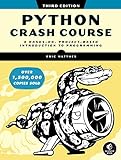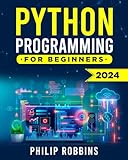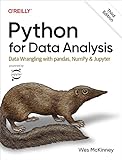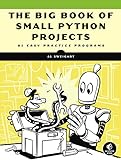To put JSON chart data into a pandas dataframe, you can first load the JSON data into a Python dictionary using the json.loads() function. Then, you can create a pandas dataframe using the dictionary as input data. This can be done by using the pd.DataFrame() function and passing the dictionary as the argument. This will convert the JSON data into a tabular format that can be easily manipulated and analyzed using pandas functions and methods.
What is the purpose of using pandas dataframe?
The purpose of using a pandas DataFrame is to store and manipulate structured data in a 2-dimensional tabular format. It provides functionalities for data cleaning, processing, analysis, and visualization. DataFrames allow users to easily load data from external sources, filter, sort, aggregate, and apply mathematical operations on data, and generate descriptive statistics and visualizations. Overall, pandas DataFrames are a powerful tool for data manipulation and analysis in Python.
How to handle missing values in json chart data when loading into pandas dataframe?
To handle missing values in JSON chart data when loading into a pandas DataFrame, you can specify how you want the missing values to be represented in the DataFrame. Here are some common approaches:
- Drop rows with missing values: You can use the dropna() method to remove rows with missing values from the DataFrame. For example:
1 2 |
df = pd.DataFrame(json_data) df = df.dropna() |
- Fill missing values with a specific value: You can use the fillna() method to replace missing values with a specific value. For example, to replace missing values with 0:
1 2 |
df = pd.DataFrame(json_data) df = df.fillna(0) |
- Impute missing values: You can use various imputation techniques to replace missing values with estimated values. For example, you can use the SimpleImputer class from the scikit-learn library to impute missing values with the mean or median of the column:
1 2 3 4 5 |
from sklearn.impute import SimpleImputer df = pd.DataFrame(json_data) imputer = SimpleImputer(strategy='mean') df = pd.DataFrame(imputer.fit_transform(df), columns=df.columns) |
These are just a few examples of how you can handle missing values in JSON chart data when loading into a pandas DataFrame. The approach you choose will depend on the specific requirements of your analysis.
How to import json data into pandas?
To import JSON data into pandas, you can follow these steps:
- Make sure you have pandas installed. You can install it using the following command:
1
|
pip install pandas
|
- Use the pd.read_json() function from the pandas library to import the JSON data. Here's an example of how you can import JSON data from a file:
1 2 3 4 5 6 7 |
import pandas as pd # Read JSON data from a file df = pd.read_json('data.json') # Display the DataFrame print(df) |
- If the JSON data is in a string format, you can use the pd.read_json() function with the json_str parameter. Here's an example:
1 2 3 4 5 6 7 8 9 10 |
import pandas as pd # JSON data in string format json_data = '[{"name": "Alice", "age": 30}, {"name": "Bob", "age": 25}]' # Read JSON data from a string df = pd.read_json(json_data) # Display the DataFrame print(df) |
These are the basic steps you can follow to import JSON data into pandas. You can also explore other parameters and options available in the pd.read_json() function to customize the import process according to your requirements.
How to extract json data into pandas dataframe?
To extract JSON data into a pandas dataframe, you can follow these steps:
- Load the JSON data into a Python dictionary using the json module:
1 2 3 4 |
import json with open('data.json') as f: data = json.load(f) |
- Convert the dictionary into a pandas dataframe using the pd.DataFrame constructor:
1 2 3 |
import pandas as pd df = pd.DataFrame(data) |
Now you have the JSON data loaded into a pandas dataframe named df. You can now perform various operations on the dataframe such as filtering, grouping, and analyzing the data.
What is json data format?
JSON (JavaScript Object Notation) is a lightweight data interchange format that is easy for humans to read and write, and easy for machines to parse and generate. It is a text-based, language-independent format used for transmitting data between a server and a web application as an alternative to XML. JSON data is represented as key-value pairs and nested arrays and objects, making it a popular choice for storing and exchanging data on the web.
What is json chart data and how to put it into pandas dataframe?
JSON chart data is data in JSON format that is structured to be easily consumed by charting libraries, typically containing information such as labels, values, colors, and other properties related to a chart.
To put JSON chart data into a pandas dataframe, you can use the json module in Python to load the JSON data and then convert it into a pandas dataframe. Here is an example of how to do this:
1 2 3 4 5 6 7 8 9 10 11 12 13 |
import pandas as pd import json # Sample JSON chart data json_data = '{"labels": ["A", "B", "C"], "values": [10, 20, 30]}' # Load JSON data data = json.loads(json_data) # Create pandas dataframe df = pd.DataFrame(data) print(df) |
In this example, the JSON chart data contains two keys, "labels" and "values". We load the JSON data using the json.loads() function and then create a pandas dataframe from the loaded data using pd.DataFrame(). The resulting dataframe will have columns for "labels" and "values", with the corresponding data.
You can also use pd.read_json() to directly read JSON data from a file or URL into a pandas dataframe.









